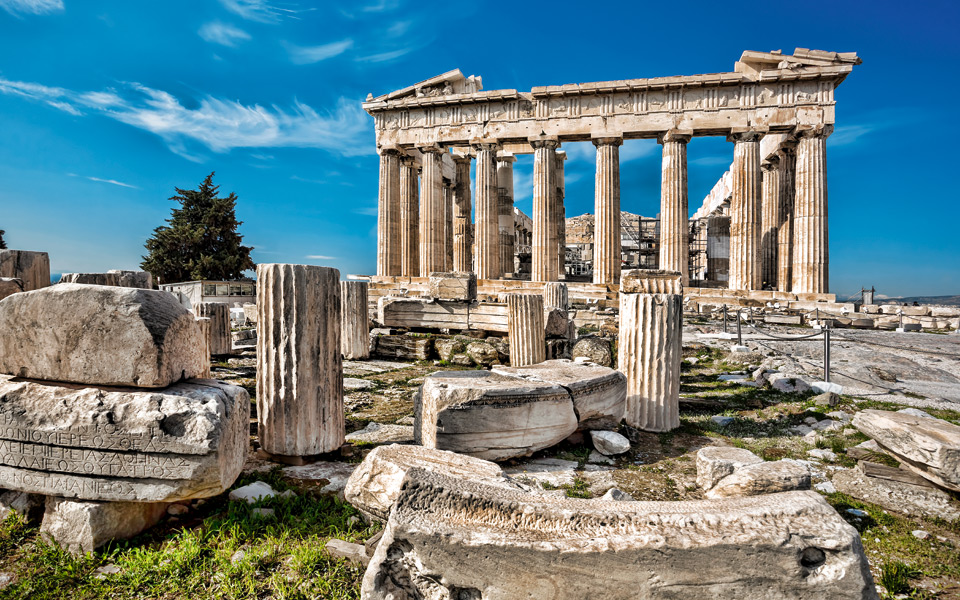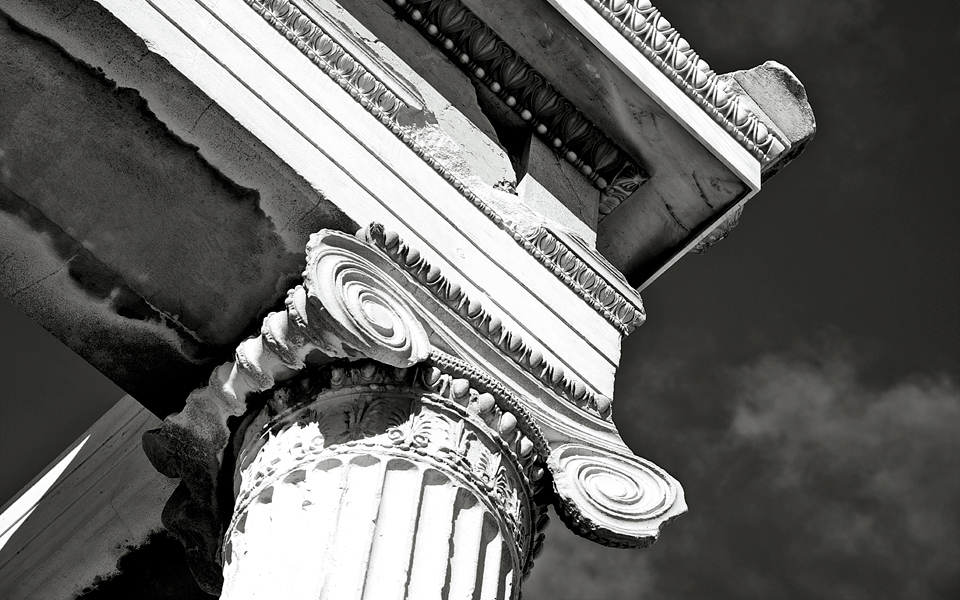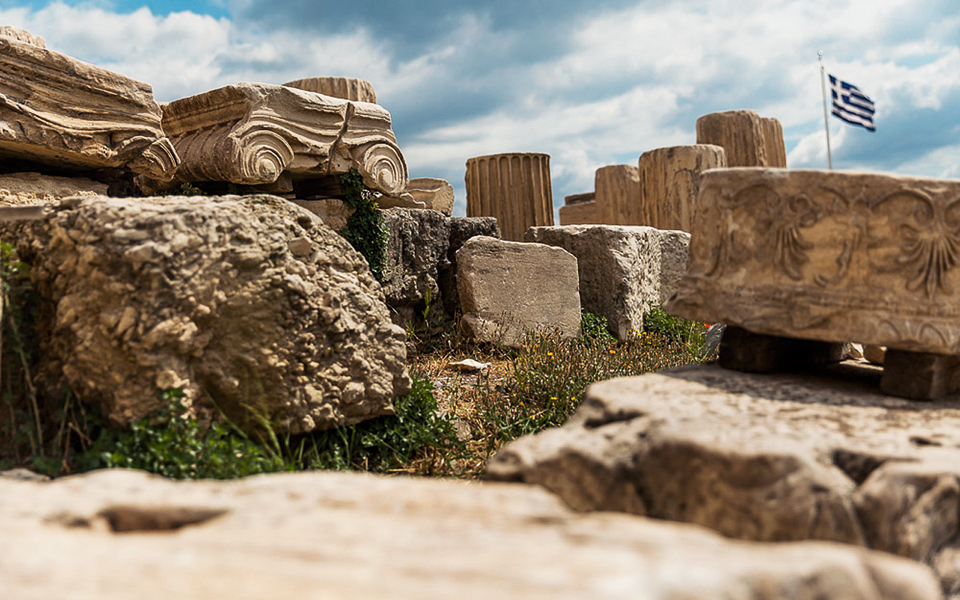Athens: The First-Time Visitor’s Essentials
Ten must-do experiences in Athens, from...

The Parthenon's east side
© Shutterstock
The Acropolis, from the Greek words akron (edge) and polis (city), is Greece’s most emblematic monument, an ancient citadel on a flat-topped rock that rises 150 meters (490 ft) above sea level from the heart of the city. Extending 70 meters high, 300 meters long and 150 meters wide, it was also known as Cecropia, after the legendary serpent-man, Cecrops, the first Athenian king. While the earliest artifacts on the Acropolis slopes date to the Middle Neolithic era, there have been documented habitations elsewhere in Attica from the Early Neolithic period (6th millennium BC). There is also evidence that a Mycenaean megaron stood atop the hill during the Late Bronze Age. So, as you make your way up to the Acropolis monuments, bear in mind that people have been ascending this outcrop for approximately 6,000 years – nearly 200,000 visitors made the climb in 2014 alone.
The Parthenon rose as the visual centerpiece of the Sacred Rock after the mid-5th century BC, built at the direction of Pericles, who employed a host of architects, artists, highly skilled stone masons and especially his friend Pheidias, the master sculptor. Pheidias, assisted by junior sculptors working in his style, produced all the temple’s lavish exterior and interior sculptural decoration, including the colossal statue of Athena Parthenos, whose face and arms were covered with ivory and the rest with gold plates weighing a total of 44 talents (1,140 kilograms). The Parthenon’s importance as a temple of Athena was overshadowed, however, by its role as a giant message board, whose sculptures reminded Athenians of the legendary greatness of Greeks. Its metopes depicted classic conflicts in which they had prevailed: the Trojan War, the Centauromachy, the Gigantomachy and the Amazonomachy.
Although 2,500 years have passed since the Parthenon’s creation, this extraordinary monument is impressive even today for its optical refinements and other innovative elements. Built in 447-438 BC, it was one of the largest Doric temples of Classical antiquity, whose estimated 13,400 blocks of marble were transported 16 kilometers from the quarries on Mount Penteli.
“ As you make your way up to the Acropolis monuments, bear in mind that people have been ascending this outcrop for approximately 6,000 years-near 200, 000 visitors made the climb in 2014 alone. ”

The Erechtheion’s north porch, one of the Acropolis’ many Classical masterpieces that influenced architectural designs in ancient Rome and elsewhere through the ages.
© Shutterstock
The unusual shape of this Ionic temple, built between 421 and 406 BC, is due not only to the sloping terrain of its setting, but also to its need to accommodate a number of individual shrines. Moreover, it was the site of marks in the rock made by Poseidon’s trident and of Athena’s sacred olive tree. Below the floor of the north porch was the mark of the thunderbolt hurled by Zeus to kill the legendary King Erechtheus.
According to Pausanias, the Erechtheion was divided into two sections. The eastern part, dedicated to Athena Polias, housed her sacred cult statue, which was draped with a freshly woven peplos during the annual Panathenaic Festival. The western part was reserved for other deities and local heroes. The temple was burned by the Roman General Sulla in 86 BC, repaired under the Emperor Augustus, then later converted into a Christian church, before becoming a Frankish palace. During the Ottoman period, it served as the residence of the Turkish governor’s harem.
The construction of this diminutive temple may have been conceived in 448 BC, but it was not completed until 421 BC, based on plans by the architect Kallikrates. The cella of this fully Ionic temple housed a wooden cult statue of the goddess Athena, while the extant sections of the frieze represent an assembly of the Olympian gods and battles between the Athenians and other Greeks or foreigners. Several frieze blocks were looted by Lord Elgin and are currently in the British Museum.

Some of the Acropolis' scattered architectural members that evoke the numerous elegant shrines and dedications once characterising the Sacred Rock of ancient Athens
© Dimitris Vlaikos
The Sanctuary of Artemis Brauronia was dedicated to the goddess as a divine protectress of women undergoing pregnancy and childbirth. The cella contained her wooden cult statue (xoanon), while a second statue of Artemis, carved by Praxiteles, was added in the mid-4th century BC. To the east of the Brauroneion was the Chalkotheke, a 4th century BC storehouse, used for the safekeeping of bronze votive offerings, while to the north stood Pheidias’ gigantic bronze statue of Athena Promachos (467 BC).
Named after the French archaeologist, Charles Ernest Beule, who discovered it in 1852, this outer gateway was part of the fortifications built in the late 3rd century AD to protect the sacred precinct, possibly after the Herulians sacked Athens in AD 267.
Ten must-do experiences in Athens, from...
A 3D reconstruction by Oxford researcher...
A guided journey across Athens’ storied...
Renewed negotiations, shifting public opinion and...